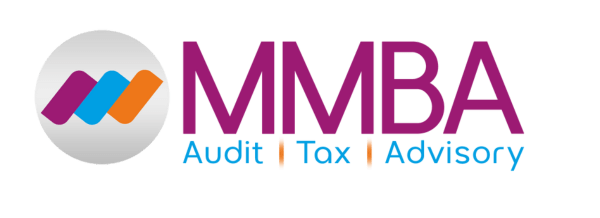
Recent Blog
Arrange a FREE Consultation Call and Let’s Discuss Your Goals!
Financial reporting is the backbone of decision-making for businesses. It offers a structured way of presenting financial information to stakeholders, including investors, lenders, and regulators. In the UK and the Republic of Ireland, FRS 102 The Financial Reporting Standard is the principal accounting framework for entities not applying EU-adopted IFRS, FRS 101, or FRS 105.
FRS 102 is designed to bring consistency, transparency, and efficiency to general purpose financial statements. Introduced as part of the new UK GAAP, it applies to a broad range of entities, including public benefit entities, profit-oriented businesses, and non-company structures. The standard, based on the IFRS for SMEs issued by the IASB, has been adapted to suit UK and Republic of Ireland conditions and regulatory needs. FRS 102 is structured into 35 sections, with each section addressing a specific area of accounting, such as inventories, impairment, and government grants.
However, having a competent FRS expert, such as MMBA Accountants FRS experts, can help you deal with the changes effectively.
Table of Contents
Introduction to FRS 102
FRS 102 represents a new standard in financial reporting for the UK and Republic of Ireland, designed to simplify and modernise the way companies prepare their accounts. Effective for accounting periods beginning on or after 1 January 2015, FRS 102 replaced a range of previous UK accounting standards, including SSAPs, FRSs, and UITFs, marking a significant shift in the statutory framework for financial reporting. The standard is based on the IFRS for SMEs, providing a streamlined approach that is both robust and accessible for a wide range of entities.
FRS 102 applies to companies and other entities not using EU-adopted IFRS, FRS 101, or FRS 105. Its introduction has had significant effects on how companies report and prepare their financial statements, offering a more consistent and comparable basis for financial information across accounting periods. By providing clear guidance and reducing complexity, FRS 102 helps companies ensure their reporting meets the needs of stakeholders and complies with evolving UK accounting standards.
Following a consultation process, the Financial Reporting Council (FRC) conducts a periodic review to keep the standard relevant. The second review concluded in March 2024, introducing significant changes, effective from 1 January 2026. This guide does not provide legal advice, interpretations, or opinions, and FRS 102 is subject to periodic review and updates.
Scope and Application
FRS 102 applies to accounting periods beginning on or after 1 January 2015, with early adoption permitted under certain conditions. It is the financial reporting standard applicable to:
- Companies not applying EU-adopted IFRS or FRS 101
- Public benefit and charitable organisations
- Qualifying entities and subsidiaries eligible for disclosure exemptions
- Micro entities, where they are not applying FRS 105
The standard affects both individual accounts and consolidated financial statements, offering reduced disclosure requirements for smaller, qualifying entities, while maintaining full compliance for consolidated accounts.
The application of FRS 102 depends on the specific terms and conditions met by each entity, as these terms determine eligibility for exemptions and the appropriate accounting treatment.
Financial Statement Presentation

Financial statement presentation includes
Contact MMBA Accountants to understand
FRS 102 changes easily!
Call us Today
Balance Sheet
The balance sheet, or statement of financial position, provides a snapshot of the entity’s financial position at the end of a reporting period. It must include:
- Recognition and valuation of each asset, liability, and equity item in accordance with FRS 102
- Present value of long-term liabilities
- Borrowing costs, including capitalised interest
- Classification of investment property
- Treatment of intangible assets, such as goodwill
FRS 102 requires clear separation between current and non-current items and outlines detailed accounting requirements and disclosure requirements.
The carrying value of assets, such as investment property or agricultural produce, must be assessed at each reporting date to ensure accurate reflection on the balance sheet.
Income Statement
The income statement, also known as the profit and loss account, shows financial performance during a period. Entities may present:
- A single statement of comprehensive income
- A separate statement of income and other comprehensive income
- The income statement must reflect:
- Revenue, costs, gains, and losses
- Recognition of variable consideration
- Specific guidance on revenue recognition and performance obligations
Turnover is measured and reported under FRS 102 as the total income from sales of goods or services, excluding VAT and similar taxes, and is a key figure for assessing an entity’s revenue-generating activities.
Entities are also required to disclose accounting policies used in measuring income, including the transaction price and treatment of contract modifications.
Dividends are determined based on profits available for distribution after accounting for revaluation movements, deferred tax, and other necessary adjustments, ensuring that only realized profits are considered for distributable dividends.
Revenue recognition is influenced by the effect of accounting treatments, which can impact the amount and timing of reported income. Recognition of revenue may depend on the occurrence of specific events or conditions, such as the completion of a performance obligation or the triggering of a contractual clause. In some cases, revenue or fees may not be recognized until a contract requires settlement, such as when payment is contingent on the settlement of an insurance claim. Work performed before a formal contract or letter of engagement is in place is treated under FRS 102 by assessing if the performance of services gives rise to revenue recognition based on the satisfaction of performance obligations.
Cash Flows and Financial Performance
Cash flows and financial performance includes
Cash Flow Statement
FRS 102 requires a cash flow statement outlining the inflows and outflows of cash and cash equivalents, divided into:
- Operating activities
- Investing activities
- Financing activities
Entities must report on cash flows from lease liabilities, interest rate swaps, and other financial instruments. This enhances the transparency of financial years and gives users a clearer picture of liquidity.
Comprehensive Income
The statement of comprehensive income includes:
- Profit or loss for the period
- Items of other comprehensive income (e.g. revaluation surplus)
- Total comprehensive income
This statement is crucial for assessing changes in equity unrelated to direct shareholder transactions.
Disclosure Exemptions
Compliance with FRS 102’s disclosure requirements is essential for transparent and reliable financial reporting. The standard requires entities to provide a range of disclosures in their financial statements, including information on accounting policies, significant judgments and estimates, and related party transactions.
These disclosures are designed to give stakeholders a deeper understanding of the company’s financial position and the basis on which the accounts have been prepared.
FRS 102 also recognises that not all entities are the same, offering certain disclosure exemptions for qualifying entities, such as subsidiaries whose parent prepares publicly available consolidated financial statements. Entities that wish to adopt the standard before the mandatory effective date can elect to do so, with earlier effective dates applying in such cases.
The Financial Reporting Council (FRC) is responsible for setting and maintaining FRS 102, providing additional guidance and support to help companies meet their reporting obligations. It is crucial for entities to stay up to date with the latest requirements, ensure all disclosures required by the standard are included, and maintain compliance throughout each accounting period. By doing so, companies can provide accurate, transparent, and compliant financial statements that meet the expectations of regulators and stakeholders alike.
Effective Date and Transition
FRS 102 came into force for accounting periods beginning on or after 1 January 2015, with early adoption permitted. For many entities, the transition to the updated standard will affect accounting periods ending on or after 31 December 2026. Following the second periodic review, key updates become mandatory for periods beginning on or after 1 January 2026.
December is a key reporting and transition date for FRS 102 compliance, marking important deadlines for implementation and financial reporting changes.
Transition and Changes to FRS 102 & FRS 105
The March 2024 periodic review introduced significant changes to FRS 102 and FRS 105. Here’s how businesses must respond:
Key Changes
Enhanced clarity around revenue recognition, aligning with IFRS 15 principles
- Introduction of guidance on lease liability reporting
- Updates to classification of investment property and treatment of intangible assets
- New rules for contract modifications, variable consideration, and progress arising from ongoing performance obligations
- Expanded scope on recognise revenue policies
Transition Process
Entities are required to:
- Restate comparative figures for prior periods, unless impractical
- Disclose the effects of changes on financial statements
- Apply a structured approach to updating accounting policies
- Engage with auditors and advisors to assess the significant impact on consolidated accounts and reporting systems
Micro-entities applying FRS 105 will also see some realignment for consistency but retain their simplified framework.
Why FRS 102 Matters
In a landscape of evolving UK accounting standards, FRS 102 offers a unified, scalable solution tailored for UK and Republic of Ireland businesses. It strikes a balance between the complexity of applying EU-adopted IFRS and the simplicity needed by small entities.
If you’re a large group preparing consolidated financial statements or a small firm using disclosure exemptions, understanding FRS 102 ensures compliance, clarity, and credibility.
Conclusion
FRS 102 The Financial Reporting Standard isn’t just a set of technical rules. It’s an evolving accounting framework that guides businesses through accurate, transparent, and efficient reporting. As the financial reporting council continues its updates and reviews, businesses should stay alert to changes, review their accounting standards, and plan ahead for upcoming accounting periods ending after January 2026.
This guide is your first step to navigating FRS 102 with confidence, even if you’re reporting cash flows, handling other financial instruments, or adjusting for prior periods. Now’s the time to prepare for the future of financial reporting.
Frequently Asked Questions
What is FRS 102 and who does it apply to?
FRS 102 is a financial reporting standard applicable in the UK and Republic of Ireland. It applies to entities not using IFRS, including companies, charities, and public benefit entities.
When did FRS 102 come into effect?
FRS 102 became effective for accounting periods beginning on or after 1 January 2015, with early adoption permitted under certain conditions.
What are the main disclosure exemptions under FRS 102?
Qualifying entities such as small companies can benefit from reduced disclosure requirements, helping simplify their financial reporting process.
How does FRS 102 treat financial instruments?
FRS 102 requires classification into basic or other financial instruments, with different recognition and measurement rules for each category.
Are changes expected in FRS 102 soon?
Yes, following a periodic review in March 2024, significant updates will take effect from 1 January 2026, affecting revenue recognition, lease liabilities, and more.


